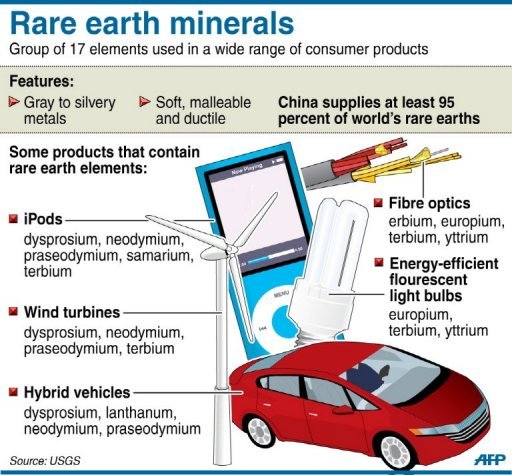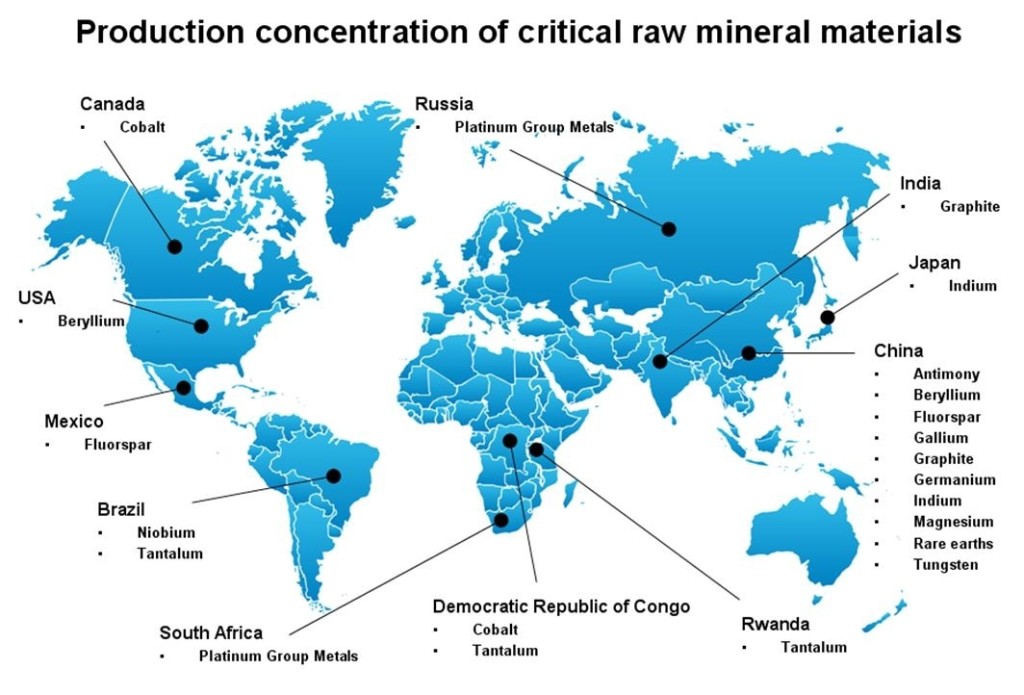Our Not-so-Green Dependence on Rare Earth Minerals
Dec 13th, 2018 | By admin | Category: Energy and Carbon EmissionsBy Candela Vázquez Asenjo, youth blogger for Transition Earth.
There seems to be hope that we are finally moving, albeit slowly, toward a more sustainable society. Solar panels, bans on plastics, green buildings and more are increasing. Yet no matter how ‘green’ our reality may appear, we are still far away from being the environmental and renewable society we think we are becoming.Although I am aware of the impacts of renewable energies such as the dams on the planet, I trusted green and renewable energies to be the best alternative to fossil fuels. Renewables, I believed, are the lowest cost solution to decreasing our huge environmental footprint. Wind, solar, electric cars are good, green sources of energy, right? However, recent research has caused me to reconsider my position that renewables are actually that clean and sustainable.
Rare Earth Makes Our World Run
Surprisingly, the impacts of renewable energies do not start or finish with the development of machinery, like wind turbines, solar panels or even electric/hybrid cars. The cost to our environment starts much, much earlier, with renewable energy components, known as rare earth elements, or minerals.
Rare earth minerals include lanthanum, neodymium or europium.
Extracting these minerals results in a high cost to the environment. For example, the production of one ton of a rare earth element emits 200 cubic metres of acidic waste water. Additionally, to be able to meet the demand for wind turbines in 2050, 80 million cubic meters of waste water will be released, without mentioning the emissions produced from the rest of the product lifecycle (smelting, separation, processing, transportation). At the same time, people that live near rare earth mines are directly or indirectly sufferingenvironmental and health problems.
By 2020, the global demand for rare earth minerals will be between 200,000 and 240,000 tons, and 70% of these rare materials will come from China. Even if China used up its entire mining quota, there would still be a gap of 35,000 tons to 63,000 tons between China’s annual output and expected required growth to meet global demand.
Furthermore, China also needs to meet the demands of the wind power, and needsthese rare earths to make thewind turbines. By 2050, China would have installed wind power capacity of 2,000,000 megawatts (2 terawatts), 2 megawatt turbine contains 341-363 kilograms of rare earth neodymium and 59 kilograms of dysprosium. https://earthjournalism.net/stories/the-dark-side-of-renewable-energy
In 2012, an investigation by China’s Ministry of Industry and Information Technology, counted 302 abandoned rare earth mining sites just in the area of Ganzhou. Nearly 97 square kilometres were affected – it would take 70 yearsjust to deal with the 190 million tons of mining waste left behind.
Due to the high demand of these materials, in 2014 China declared a “war on pollution,” and introduced an environmental protection law and standards for the rare earth industry, regulating its emissions and the use of water and energy employed. This means that the increased costs and shortages will lead to price rises. Consequently, the black market will also rise. It is already two to three times the size of the legitimate market, such as in China, where the Ministry of Land Resources permits an output of 17,900 tons per year, yet in 2014 China had a supply over 40,000 tons.
The Power of Information
Although much more could be said about the impact of rare earth minerals and renewable energy sources, consider this is a brief introduction to the current situation. Perhaps it is a good time to ask ourselves, ‘how we can avoid being part of this vicious circle?’ The answer should be clear that little can be done to change things at the moment, but do not underestimate the power of knowledge. With proper information and education, we can make informed choices and move away from dirty fossil fuels towards clean energy.
Everything that we humans do has an impact on the planet. The good news is that when we hear about a problem and learn about what is happening, then we are halfway there to overcoming the challenge. Now we know about the reality behind our environmental footprint and decisions, a global campaign can emerge, which represents a huge power. This power (awareness) can be used to push for the development of new technologies to solve this dependence on precious rare earth minerals, and move toward truly renewable and sustainable sources of energy in our society.
Candela Vázquez Asenjo is a recent graduate of the University of Manchester, UK, with a degree in Environmental Management. She has also earned a law degree from Nebrija University in Spain. She is a social entrepreneur, with a focus on international environmental problems.

![Mining for rare earth metals [Photo Credit: Wikimedia Commons]](http://populationgrowth.org/wp-content/uploads/2018/12/Figure-1-640x426-300x200.jpg)

